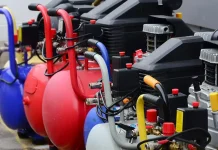The indoor cultivation of cannabis is an energy-intensive endeavor, with HVAC systems often accounting for a significant portion of a facility’s operational electricity costs. Achieving the precise climate control necessary for optimal plant health and yield, while simultaneously managing energy consumption, is a constant balancing act for growers. This is where Hot Gas ReHeat Cannabis (HGRH) systems stand out as a highly effective and energy-efficient solution, offering substantial benefits for cannabis facilities.
The Energy Drain of Traditional Climate Control
Traditional HVAC approaches in cannabis facilities often fall short in energy efficiency due to the unique demands of the plant:
- High Latent Loads: Cannabis plants transpire a tremendous amount of water vapor, especially during their vegetative and flowering stages. This creates a high latent (moisture) load that traditional AC units, primarily designed for sensible (temperature) cooling, struggle to handle efficiently.
- Overcooling for Dehumidification: To remove sufficient humidity, standard AC systems often have to cool the air far below the desired temperature. This leads to overcooling, which then necessitates the use of separate electric or gas heaters to bring the room back to the optimal temperature, wasting significant energy in a constant cycle of cooling and reheating.
- Inefficient Standalone Dehumidifiers: While standalone dehumidifiers remove moisture, they often generate their own heat as a byproduct, adding to the sensible load that the main HVAC system then has to cool, creating an energy-intensive feedback loop.
- Temperature Swings: The push and pull between cooling for dehumidification and heating for temperature control can lead to inconsistent environments, stressing plants and hindering growth, indirectly impacting overall energy efficiency as suboptimal growth requires more resources over time.
How Hot Gas Reheat Delivers Energy Efficiency
Hot gas reheat systems are a sophisticated form of dehumidification that are inherently more energy-efficient because they cleverly recycle “waste” heat from the refrigeration process itself.
Here’s the mechanism:
- Dehumidification Through Cooling: Like any air conditioning unit, HGRH first cools the moist air over an evaporator coil, causing water vapor to condense out. This effectively dehumidifies the air.
- Reclaiming Heat: Instead of simply rejecting the heat absorbed by the refrigerant to the outside (as a traditional AC would), a portion of the hot, high-pressure refrigerant gas is diverted.
- Internal Reheating: This hot gas is routed through a dedicated reheat coil located downstream from the cooling coil. The air, now cold and dry, passes over this reheat coil, absorbing the “reclaimed” heat.
- Simultaneous Control: The result is precisely dehumidified air that is then brought back up to the desired temperature without the need for an external, energy-consuming heat source. The energy used for cooling is intelligently reused for reheating.
Tangible Energy-Saving Benefits for Cannabis Cultivators
The design of HGRH systems translates directly into significant energy savings for cannabis grow operations:
- Reduced Heating Costs: By utilizing heat that would otherwise be exhausted, HGRH systems dramatically lower or eliminate the need for supplemental electric or natural gas heaters to rewarm the dehumidified air. This is a major source of energy waste in traditional setups.
- Optimized Dehumidification: HGRH systems can efficiently dehumidify the air even when the grow room doesn’t require further cooling. This “decoupled” control means the system can operate precisely to remove moisture without over-working other components or wasting energy on unnecessary cooling.
- Lower Overall kW/sq. ft. Consumption: Studies and real-world applications show that facilities utilizing well-designed HGRH systems can achieve a substantial reduction in total energy consumption per square foot compared to those using conventional HVAC and separate dehumidifiers. This translates directly to lower utility bills.
- Improved Efficiency at Part-Load: HGRH systems are often designed with modulation capabilities, allowing them to adjust their output to match the precise latent and sensible loads of the grow room. This ensures they operate efficiently across varying conditions, rather than running at full power when not needed.
- Enhanced Vapor Pressure Deficit (VPD) Management: While not directly an energy saving, precise VPD control (made possible by HGRH’s ability to balance temperature and humidity) leads to healthier plants with optimized growth and nutrient uptake. Healthier plants are more efficient in their use of resources over their lifecycle, indirectly contributing to overall energy efficiency of the cultivation process.
- Reduced Wear and Tear on Equipment: By operating more efficiently and reducing the conflicting demands on heating and cooling components, HGRH can potentially extend the lifespan of HVAC equipment, leading to lower maintenance and replacement costs over time.
In the highly competitive and energy-intensive cannabis industry, every watt saved contributes to the bottom line. Hot gas reheat systems offer a compelling return on investment by providing superior climate control with significantly reduced operational energy costs. For growers aiming for both optimal yields and sustainable, profitable operations, HGRH is not just a beneficial upgrade, but an essential component of an energy-efficient cannabis HVAC strategy.










